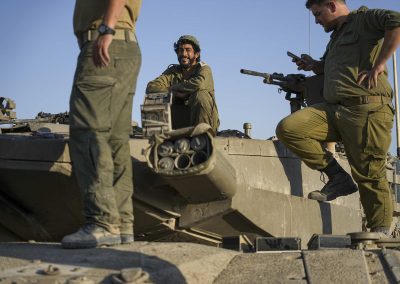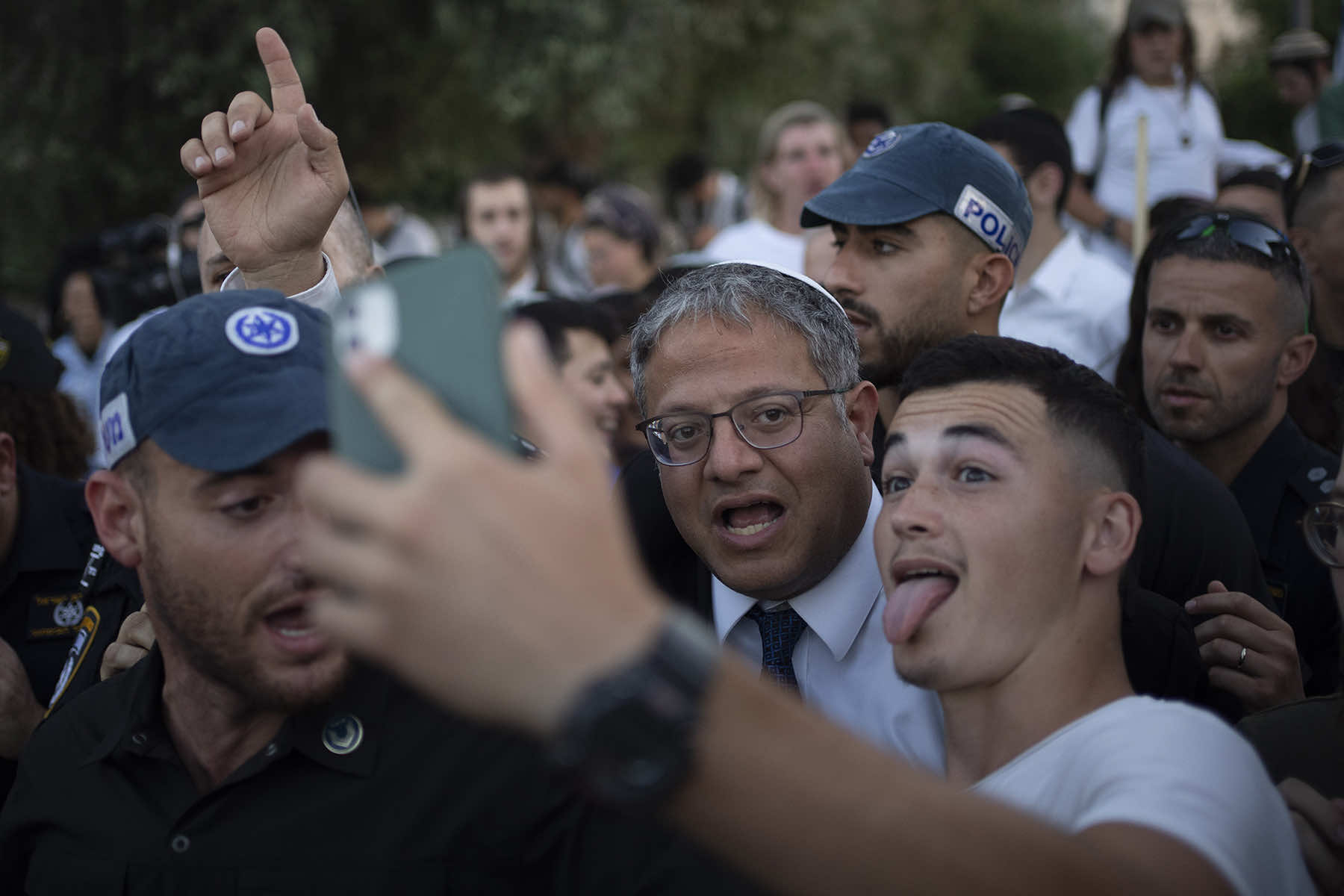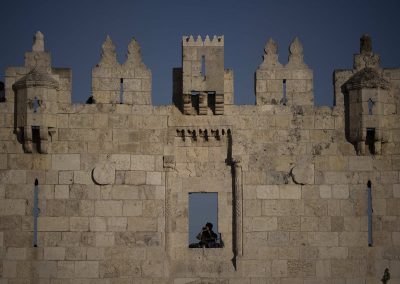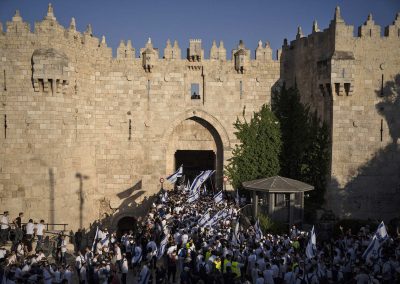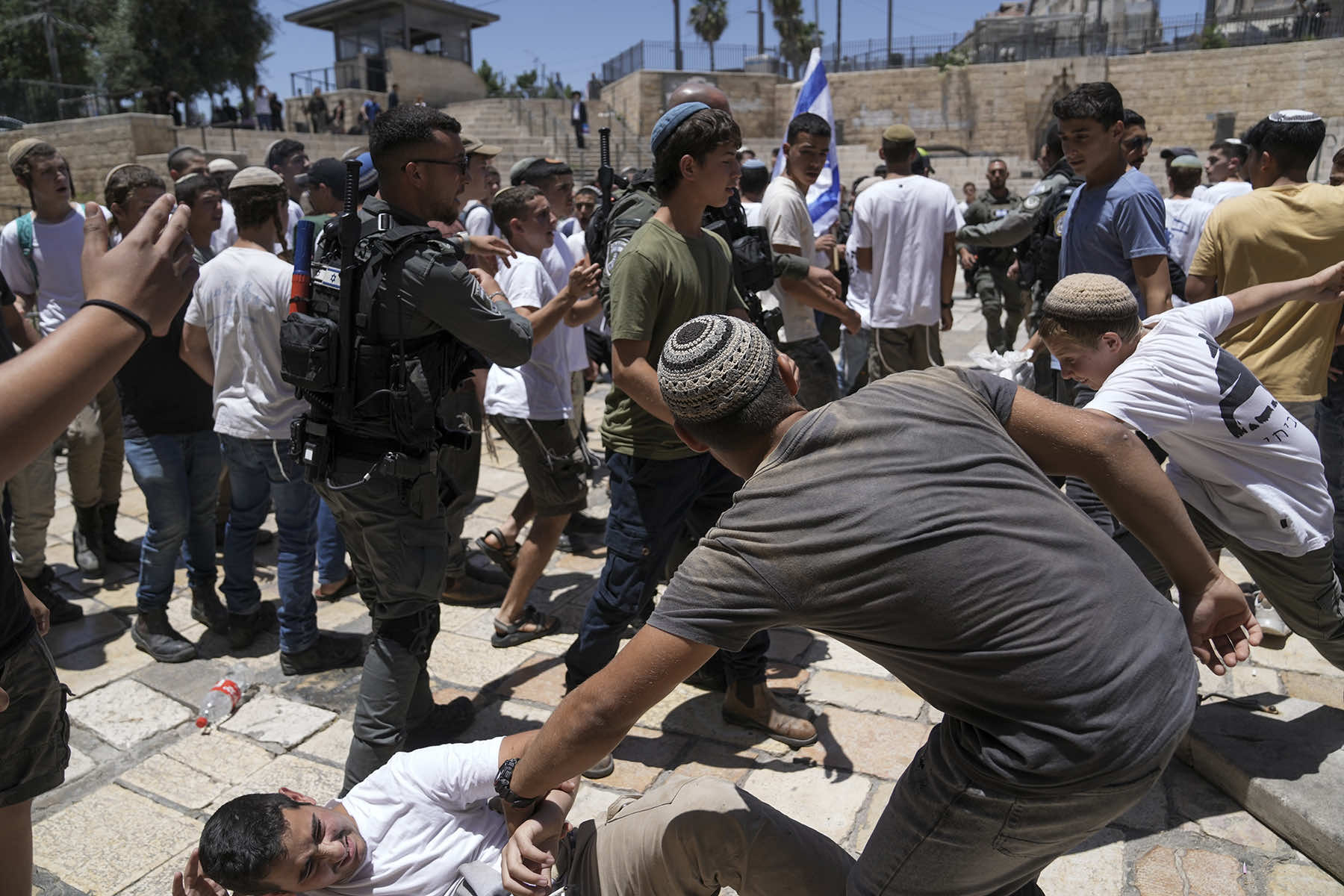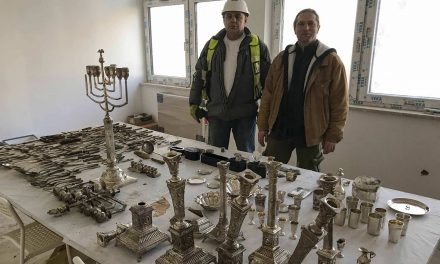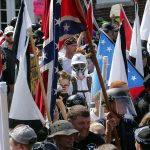
Thousands of ultranationalist Israelis marched through a sensitive Palestinian area of Jerusalem on June 5 in an annual procession, chanting racist slogans as the country’s far-right national security minister boasted that Jews had prayed freely at a key holy site in the city in violation of decades-old understandings.
The comments by Itamar Ben-Gvir and the march in Jerusalem, the emotional heart of the Israeli-Palestinian conflict, threatened to stoke already high tensions that have gripped the region since the start of the war in Gaza. The annual march, seen by Palestinians as provocative, helped set off an 11-day war in Gaza three years ago.
Marchers convening outside the Damascus Gate of Jerusalem’s historic Old City, a central gathering place for Palestinians in east Jerusalem, chanted “Death to Arabs” and other anti-Arab and anti-Islamic slogans. They danced and waved Israeli flags as the procession kicked off.
Ben-Gvir, who was once on the fringes of Israeli politics but now holds a key position in Prime Minister Benjamin Netanyahu’s government, had insisted that the march follow its traditional route through the Palestinian area, despite tensions surging because of the war.
Marchers entered the Muslim Quarter of the Old City through Damascus Gate and ended at the Western Wall, the holiest place where Jews can pray.
The police stressed that the march would not enter the sprawling Al-Aqsa mosque compound, the third holiest site in Islam. The hilltop on which it stands is the holiest site for Jews, who refer to it as the Temple Mount because it was the location of the Jewish temples in antiquity.
But activists said hundreds of Jews had visited the compound earlier in the day, and Ben-Gvir said they prayed there freely, following what he said was his own policy that permitted prayer there.
Since Israel captured the site in 1967, Jews have been allowed to visit but not pray there. Perceived encroachments on the site have set off widespread violence on a number of occasions going back decades.
“Jews prayed on the Temple Mount. This is the minister’s policy,” Ben-Gvir told the Galey Israel radio station.
Netanyahu said there had been no change to the understandings at the holy site that prevented Jewish prayer there.
Ben-Gvir has long called for greater Jewish access to the holy site and has visited it repeatedly as a minister. Palestinians consider the mosque a national symbol and view such visits as provocative and as a potential precursor to Israel seizing control over the compound.
Most rabbis forbid Jews from praying on the site, but there has been a growing movement in recent years of Jews who support worship there.
The annual march commemorates “Jerusalem Day,” which marks Israel’s capture of east Jerusalem, including the Old City and its holy sites sacred to Jews, Christians and Muslims, in the 1967 Mideast war.
Israel considers all of Jerusalem to be its capital, but its annexation of east Jerusalem is not internationally recognized. The Palestinians, who seek east Jerusalem as the capital of a future state, see the march as a provocation.
Just before the march began, crowds scuffled with police and threw plastic bottles at a journalist wearing a vest with the word PRESS emblazoned on it. Police said they arrested 18 marchers “on suspicion of violent crimes, assault and threats and disorderly conduct.”
Police said they deployed 3,000 security personnel to ensure calm and were seen arresting several Palestinian men before the march got underway, leading them away with their hands bound behind their backs.
Ben-Gvir said the march sent a message to Hamas.
“We are delivering a message from here to Hamas: Jerusalem is ours. Damascus Gate is ours,” he told marchers at the start of the rally. “And with God’s help total victory is ours,” Ben-Gvir said, referring to the war in Gaza, which he has demanded that Israel continue until Hamas is defeated.
Commenting on the march, Hamas leader Ismail Haniyeh said “our people will not rest until the occupation is gone and an independent Palestinian state is established, with Jerusalem as its capital.”
The march was taking place as tensions over the Israel-Hamas war in Gaza are high. The war began with Hamas’ October 7 attack into southern Israel, in which militants killed some 1,200 people, mostly civilians, and abducted around 250 hostages.
Netanyahu responded with a massive offensive that has killed over 36,000 Palestinians, according to local health officials, displaced most of the territory’s population and caused widespread destruction.
The United States has thrown its weight behind a phased cease-fire and hostage release outlined by President Joe Biden. But Netanyahu has said he will not end the war without destroying Hamas, while the militant group is demanding a lasting cease-fire and the full withdrawal of Israeli forces.




